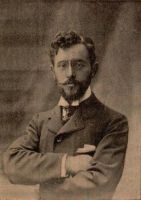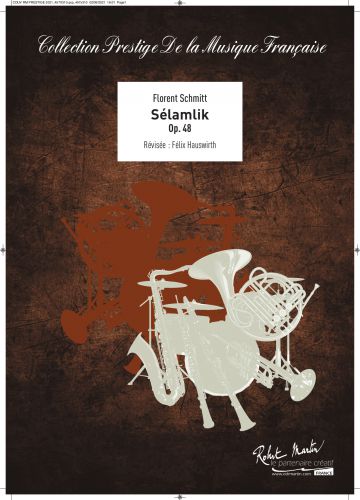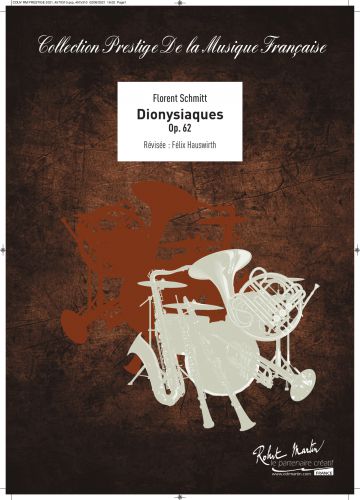Florent SCHMITT

Florent Schmitt Nancy and then studied at the Paris Conservatoire where he was a pupil of Massenet and Fauré. In 1900, he received the Prix de Rome for his cantata Semiramis. In 1904, Schmitt completed his grandiose and thunderous Psalm XLVII, which brought him success at its inception. For Norbert Dufourcq, "The emergence of Psalm XLVII in 1906 was the most important event in French music since Pelleas. "The humor of cow Boar of Ardennes, free and frank, even harsh, his joke to Satie's titles also expressed mystifying: Suite in rockeries, Çançunik, Suite mindless away, Officer MCMXII inaction music, Sonata in free Both parties chained, Habeyssée, etc.. Influenced in his youth by Impressionist and Symbolist movements as well as by Chopin, he developed an aesthetic opulent, supported by a clever counterpoint. The use of percussive effects the apparent primitive before its researches to the modern Russian music. His art was not mixed with the image of his character whose caustic wit did not exclude benevolence. In 1924, the creation of the ballet at the Opera The Little Elf-farm the painter he proved a delicious childhood while that Antony and Cleopatra (1920), Salammbo (1925) and the sumptuous Oriane and the Prince Love (1938) spent the Orientalist inspired symphonist and heir of classical pure. Member of the League of Apaches, Schmitt was cofounder in 1909 of the Company's independent music with Maurice Ravel, Gabriel Faure, Emile Vuillermoz Louis Aubert, Charles Koechlin, and Jean Hure. He was the director of the Conservatoire de Lyon from 1921 to 1924, Le Temps newspaper columnist from 1929 to 1939. Rather rough personality, independent, enemy of dogma and systems, with an uncommon fertility due to his long life, he composed in all areas except the opera. His music is strong, characterized by a rhythmic dynamism and a sensual melody, harmonic language has a rich and sweet inspiration both classical and romantic. The exotic appreciated at the time is reflected in several of his compositions, such as the lyrical tone poem The Tragedy of Salome, dedicated to Igor Stravinsky and Diaghilev honored by. These two works were most popular with his Quintet for Piano and Strings which gathered the admiration, among others, a Georges Enesco. His Second Symphony was premiered by Charles Munch few weeks before his death. Florent Schmitt was appointed member of the Academy of Fine Arts in 1936, received the Grand Music Prize of the city of Paris in 1957. But this major artist of the twentieth century has left a monumental work is still unknown to the French public. Its independence and its weak attachment to fame and followers of modes are not strangers to this fact. Today, one can assume that they have strongly influenced the history of French music of the early twentieth century, as well as Debussy, Ravel and Roussel. He is recognized as one of the pillars of the repertoire for saxophone quartet [ref. desired]. He is buried in Paris Bagneux. Google machine translation: Florent SCHMITT's original bio |
 |
| ||
| Florent SCHMITT Arr : Felix HAUSWIRTH Publisher : Martin Musique Genre : Orchestra Group : Wind band Style & options : Original music |
Set Wind Band (SCHM05306-BA) : € 254,40 Full score (SCHM05306-CO) : € 52,99 |
||
 |
| ||
| Florent SCHMITT Arr : Felix HAUSWIRTH Publisher : Martin Musique Genre : Orchestra Group : Prestige collection Style & options : Original music |
Set Wind Band (SCHM05180-BA) : € 254,40 Full score (SCHM05180-CO) : € 52,99 |
||
